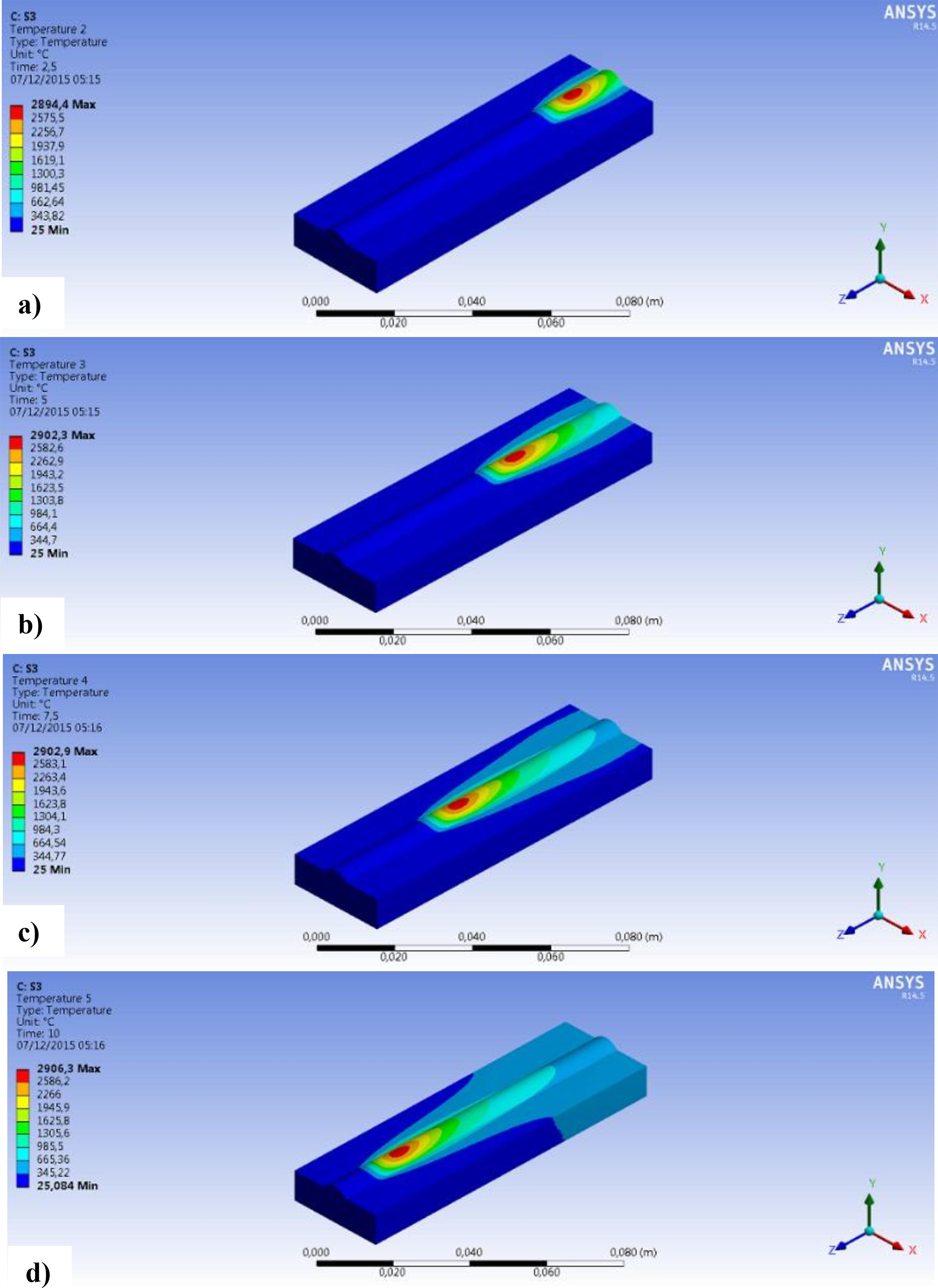ABSTRACT
The double layer welding technique uses a controlled deposition method, where the relationship between the thermal inputs from the second layer to the first (E2/E1) must be carefully defined to promote grain refinement in the Heat Affected Zone (HAZ). However, the parameterization of the welding processes for this technique is usually experimental, requiring tests, samples and consumables, demanding time and high cost. A possible solution to this problem is a computational analysis applied to the welding process, making this study to be of great relevance. This work aims an initial study of HAZ behavior in double layer welding using the Finite Element Method (FEM). Experiments were performed to compare and validate the numerical model. In this way, six samples were made, three with a single layer and three with double layer. Three different welding energies were used for the first layer (0.571, 0.428 and 0.342 kJ/mm) and the double of those energies for the second layer (1:2 energy rate). Macrographs of the experimental and numerical results were compared for single and double layer conditions, and HAZ dimensions were measured along the sample cross section. Therefore, it was noted that 1:2 energy rate is sufficient to reach the coarse grain zone of the first layer. In addition, macrographic and HAZ measurements results showed excellent convergence between the experimental and numerical analysis, validating the proposed model.
Keywords
Heat distribution in welding; Welding simulation; Overlapping thermal cycles







